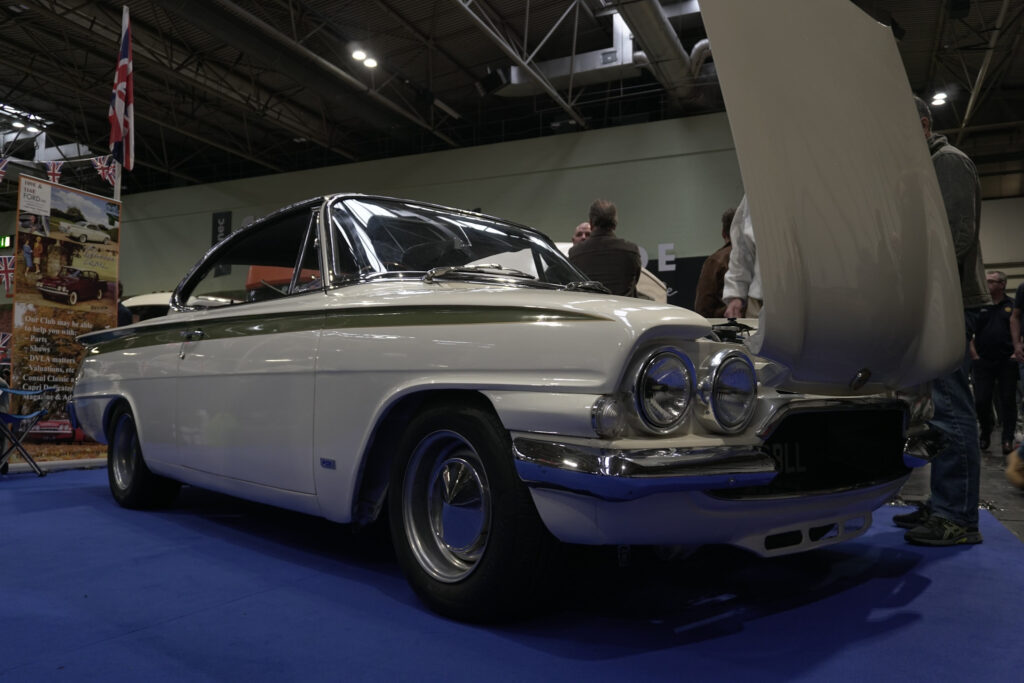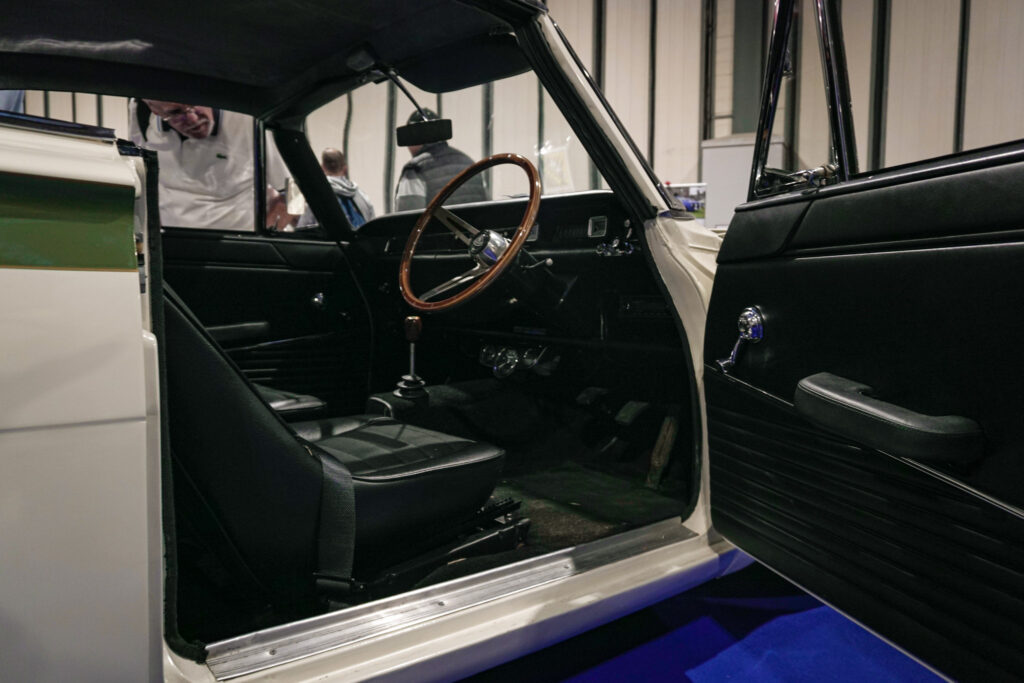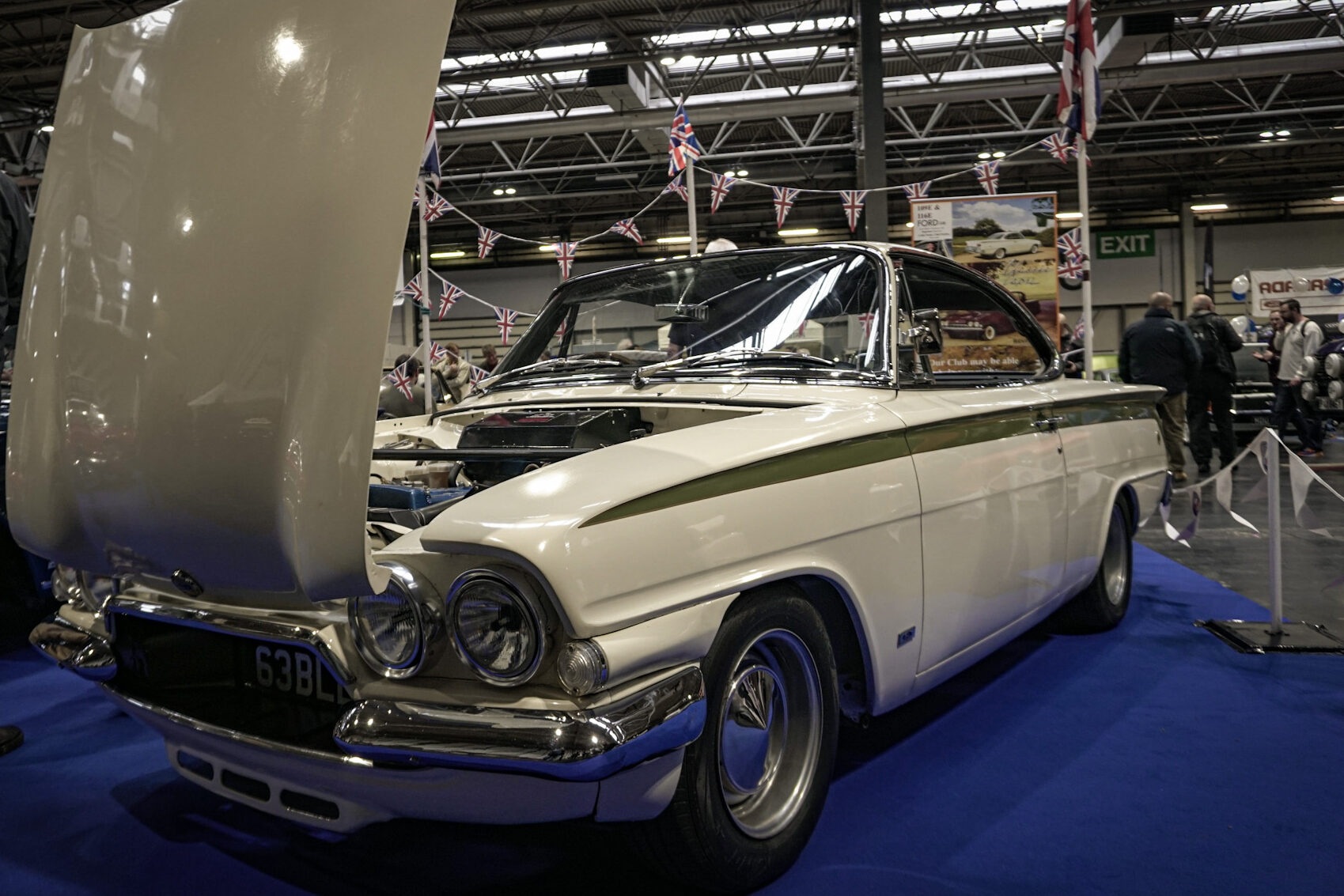
Backtracking the Ford Capri Consul’s Origin
Custom builds come in all shapes and sizes, some executed better than others. Then come people like Steve Heart who managed to not only rival but surpass the level of finesse even Ford’s industrial might couldn’t rival back in the 60s. We are looking at one man and his vision to create the car Ford and Lotus never could. We are talking about the Lotus Capri Consul. To comprehend this one-off creation’s appeal, let’s take a brief look at the origin of Ford’s blue-collar heroes and how this one-off Lotus Consul Capri fits into the narrative.


The Consul Capri is perhaps one of the most misunderstood cars envisioned by Ford of Britain. The car was the first to bear the Capri name, alongside its four-door counterpart called the Consul Classic, but unlike the Cortina that got all-new underpinnings, the Consul range shared more with its predecessor, the Ford Anglia which dates back to 1939. Powered by a 1340cc engine mated to a 4-speed transmission and a more powerful 1,498cc mated to a 5-speed gearbox, which was introduced later down the line. The Consul Capri’s body was complex and elegant that weighed nearly 200 kg more than a Mk.1 Cortina which meant the performance was far from electrifying. The bodies were manufactured by a Cowley-based Pressed Steel Company, then the completed bodies were shipped out to Dagenham for paint and assembly. This exercise proved to be a logistical nightmare and Ford seized production in 1964 after making just 2500 odd units since its launch in 1961 including the Consul Capri GT with its Cosworth-developed, high-compression engine.
The Lotus Connection

The next piece of this puzzle is the Lotus Cortina, announced back in January of 1963, it was the first in a long line of affordable fast Fords’. Ford devised the Lotus Cortina to tackle the tracks in the British Saloon Car race series, and it packed all the right hardware for the job. Its light, monocoque chassis made it the perfect starting point. The Mk.1’s 1.5-liter twin-cam engine was the centerpiece, a unit capable of producing nearly 105 horsepower and a very distinct noise which according to Jeremy Clarkson, “Sounds like a murder of mad bees, revs like hell to 8000 RPM”. This was enough oomph to propel the road cars to 108 mph while the unrestricted race cars could crack 145 mph.
What makes this build so rich is Heart’s history with Consul Capri. As a young 21-year-old, he owned and loved his Consul Capri which tragically crashed and he’s been on the lookout for one since. This particular example from 1962 was acquired by him over seven years ago and a few years down the line, he got his hand on a Lotus Cortina engine and from this point, things just fell into place. Steve initially envisioned his Consul in black, but it was his dad, Brain, who suggested the idea of converting this shell into a Lotus Capri. “It was dad’s enthusiasm to complete the car that drove me to finish it, but unfortunately he passed away before I could complete it.”


An electrician by profession, Steve was no classic car expert but he had a clear vision for this car. He wanted to capture the essence of the Lotus Cortina and Elan to create his interpretation of a factory GT Sports car, from that era. He’s put a lot of effort into getting the details right, everything from the period Lotus gearstick to the steering all mimics the Lotus Cortina and the paint which was done by Steve himself has been finished to perfection, right down to the green strip down the side which fits the Consul’s curvacious silhouette even better than the Mk.1 Lotus Cortina.
The basis for Steve’s Lotus Consul is the 1,498cc Ford Kent 116E five-bearing engine. Lotus founder, Colin Chapman was paramount in the development of this engine since he was keen on using it as a replacement for the expensive Coventry Climax engine used by Lotus vehicles at the time. Chapman had tasked Harry Mundy, the designer of the Coventry climax engine to bring the Ford motor up to Lotus specs with key inputs from Keith Duckworth of Cosworth. The engine found its way to Jim Clark’s Lotus 23 and the Lotus Elan. During its development, Ford’s Walter Hayes had asked Lotus to produce 1000 engines for its homologation special saloon that would compete in Group 2 racing.
Heart’s take on the Lotus Consul Capri


The engine Steve used for his car was not in the best shape, to begin with. Sourced from Amsterdam, the engine belonged to a lightweight Lotus Cortina that only raced ones and the engine pretty much sat there since. It was stored without sparkplugs which caused water damage. So Steve took this opportunity to get the engine rebored and balanced, so it’s not only making a smidge more power than the stock unit, but it’s also a lot smoother as the revs climb. The gearbox too is a dated-correct unit with overdrive and a high ratio first which lends it brisk acceleration.
On the subject of acceleration, Steve also mentioned his discomfort in placing his Consul Capri in a show environment. “It is very uncomfortable for me to get it to a show, it’s not a display car, it’s meant to be driven and used. It does hill climbs and it’s been crashed, it does get driven hard” said Steve.

But getting the bigger engine in was far from a plug-and-play job. Though the Lotus Cortina’s engine block started life in the Consul Capri, after Lotus was done fiddling with the unit, it was a lot chunkier. To make it fit in the Consul’s tight engine bay, Steve had to move the engine forward and down slightly. It’s even running a custom radiator and a custom fan that Steve fabricated himself. Furthermore, the master cylinders for the brakes have been moved inside the car and even the heater box had to be moved behind the firewall to accommodate the factory oil reservoir and filler cap, in an attempt to alleviate those few extra inches of clearance. The results are simply stunning and the engine bay looks just as good, if not better than the ones on brand new Lotus Cortinas.
This psychotic attention detail is carried over to the car’s suspension setup. “It’s got anti-roll bars, its got coil overs up front with gas struts, rear runs leaf springs in combination with coil overs which replace the old leaver arm dampers to get a stiff and progressive rear end,” said Steve. The front too gets a more aggressive facia, derived by chopping and modifying the front bumper and grille. This then is what you call a hero car, with its place reserved in the oddball wall of fame.
